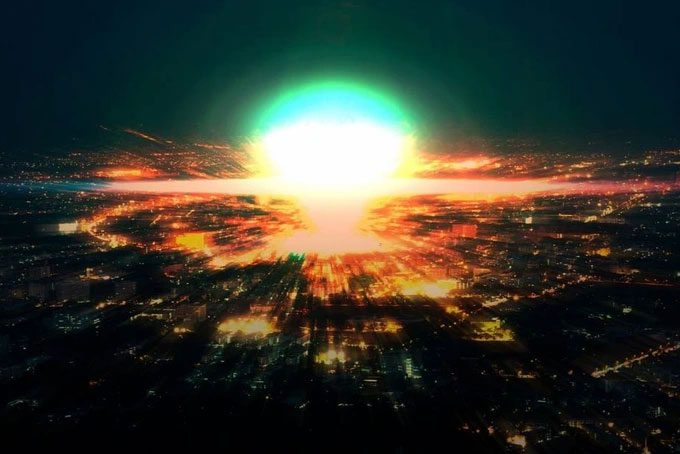How Would a Nuclear Conflict Impact Humanity and the Planet?
Any nuclear conflict would lead to a series of devastating consequences, ranging from immediate deaths due to direct explosions to the long-term effects of radiation and environmental contamination.
According to a new study published in the journal Nature Food, the on-site death toll, no matter how high, pales in comparison to the number of deaths that would occur due to global famine afterward, primarily caused by a significant amount of black smoke rising that would block sunlight, disrupting the climate system and food production capabilities.
Scientists at Rutgers University in the United States have warned about the consequences associated with six nuclear war scenarios.

Climate scientists at Rutgers University, USA, have outlined six nuclear war scenarios and their associated consequences (Photo: Canva).
The worst-case scenario involves a full-scale nuclear war between the United States and Russia. The aftermath would see over five billion people starving within the subsequent two years. Even a small-scale conflict between India and Pakistan could lead to widespread famine globally.
Black Smoke Generated from Explosions Will Disrupt the Climate System
In a nuclear war, bombs targeting cities and industrial areas would create firestorms, releasing a massive amount of black smoke into the upper atmosphere, potentially spreading globally.
This smoke acts as a “shield” against sunlight and rapidly cools our planet.
As a result, Earth’s climate would be disrupted, affecting food production systems. Using forecasting tools and estimating yields of major crops in each country, scientists analyzed each nuclear conflict scenario at various levels of black smoke coverage in the atmosphere, with temperature drops ranging from 1 to 16 degrees Celsius.
Even a minor conflict between India and Pakistan could reduce crop yields by 7% over five years of conflict. According to the Union of Concerned Scientists, both countries possess comparable nuclear arsenals, and among the nine nuclear-armed states, they are among the few increasing their stockpiles of nuclear warheads.
If a comprehensive nuclear war were to occur between Russia and the United States, which hold 90% of the world’s nuclear arsenal, crop yields could plummet by 90% within three to four years after hostilities begin.
Listening to Science
The researchers also considered mitigating factors, such as using crops meant for livestock as food for humans or reducing household food waste. However, the conclusion remains that these supplementary measures would not prevent the world from experiencing famine, especially after large-scale conflicts.
Crop yields would decline severely in countries located at mid to high latitudes, including major exporters like Russia and the United States. This would not only reduce export volumes but also cause significant disruptions in African and Middle Eastern countries that heavily rely on food imports.
The research team stated they would continue to identify more specific impacts, for example: the ozone layer would be destroyed due to stratospheric warming, leading to increased ultraviolet radiation affecting the Earth’s surface, which would undoubtedly impact food supply.
“As long as nuclear weapons exist, they can be used, and the world has come close to the risk of nuclear war multiple times. A ban on nuclear weapons is the only long-term solution.
The five-year United Nations treaty to ban nuclear weapons has been ratified by 66 countries, but none of the nine nuclear-armed states are among them.
“Our work clearly shows that it is time for these nine nations to listen to science and heed the rest of the world and sign this treaty,” stated Professor Alan Robock, a climate science expert and co-author of the study.


















































